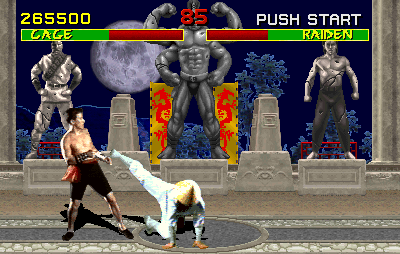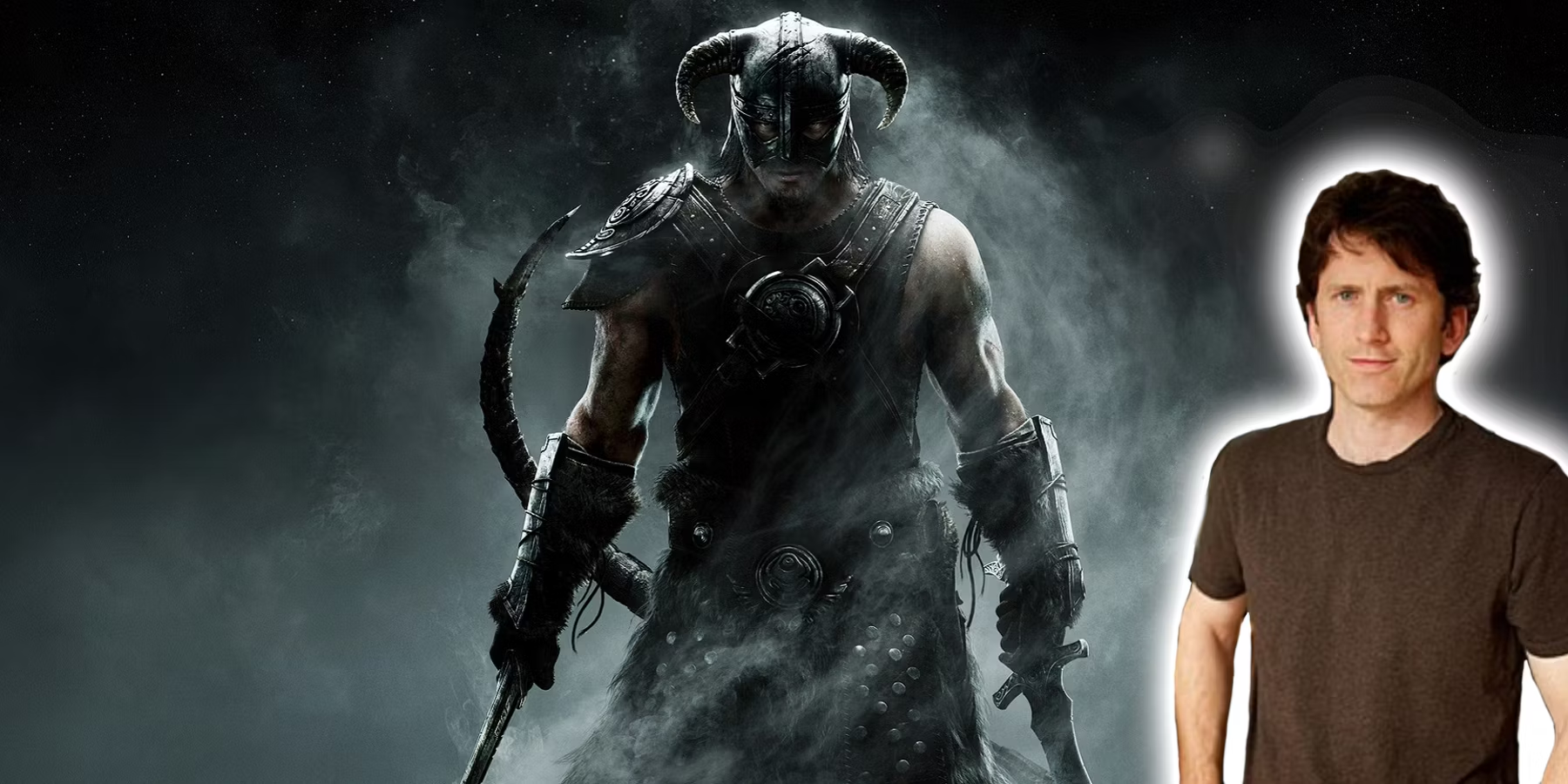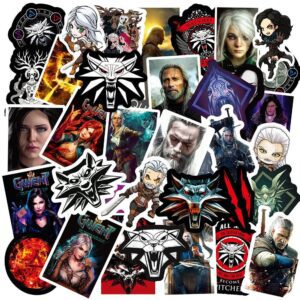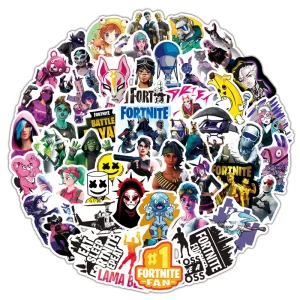Japan has a great pedigree of fighting games, from Street Fighter to Guilty Gear and King of Fighters, the history of the fighting game community is paved with Asian games. The West doesn’t have nearly the pedigree, except for one series. Mortal Kombat erupted into arcades all the way back in 1992, at a time when the violent entertainment of the 1980s was being looked at under a microscope. The effect on violent entertainment on violence in the real world was beginning to be explored not only in video games but in movies and music. In stepped Ed Boon and John Tobias, employees with Midway Games, who brought a new level of violence and gore to the video games industry. Whereas the games coming from Japan which were Kung-fu tournaments in digital form, Mortal Kombat presented a world where you were literally fighting for your life including an end of match ability to perform an over-the-top killing move to your opponent. MK was a sensation but was not without controversy.
As the years go by and times and technologies have changed, MK has adapted and thrived, always showing a snapshot of the world through digital violence. We’re going to explore how the series has evolved through the years as well as how our world has changed.

Mortal Kombat (1992)
It is October 1992, the United States and NATO forces are deeply embroiled in the Civil War in Somalia, desperately trying to end the conflict. Things are looking gloomy on that front. There is a deeply divisive presidential election going on between the current President George Bush racing against the younger and “cooler” Bill Clinton. The device of the election is already deepening the tension from the riots in Los Angeles after the Rodney King Trial. Congress, led by Democrat Joseph Lieberman, has begun to look into the violence in media as a trigger for real violent acts.
With all of this going on, you would think that the video game industry would be becoming softer and less violent. Midway would have something to say about that. The first MK would be released in arcades in October of 1992, and while the violence in it now seems rather tame, compared to modern games, for its time it contained a level of violence that was unheard of. The gaming public loved it and crowded around cabinets to test their might, but parents and politicians were worried how this amount of violence was affecting our children and the unstable. MK along with Sega CD FMV adventure game Night Trap would lead to the 1992-1993 US Senate Hearings on Videogame Violence which lead to the video game industry to “self-regulate” and institute the ESRB, the video game ratings board that is still in use today.
The game itself is iconic. Using real actors digitized into sprites, MK had an art style that had not been seen anywhere else. The fighting systems were basically all the same between characters, except for special attacks that allowed the fighters to differentiate themselves from the competition. The first game only has seven characters to choose from, but these characters (except for Liu Kang) would go on to be featured in each numbered installment. The end of each match allowed for the winner to input a series of movements that will then display a gruesome finishing moves called fatalities which would become one of the series most iconic features.
MK would receive several home editions, the most notable being the SNES and Sega Genesis versions. The Super Nintendo version excluded fatalities and the instances of blood during the fights even though the visuals were closer to the arcade. The Genesis version allowed the uncensored version to be played with the use of a cheat code. The console ports came out in 1993. Which happened to be the same year as…
Mortal Kombat II
The World of 1993 was more of the same as the previous year. In the six months between installments, a number of crazy things had happened. The siege of the Waco compound of the Branch Davidian Cult by ATF agents had shocked the world and given a black mark to the reputation of government agencies. An oil tanker, the MV Braer, was sunk by hurricane force winds, spilling 85,000 tons of crude oil. An earthquake devastated Japan. And to add insult to injury, Islamic fundamentalists had bombed the World Trade Center.
MKII was released to arcades in April 1992, a mere six months after the first installment. The gameplay was very similar to the first one, albeit with some extra moves and faster gameplay. The fatality systems were also upgraded, expanding the number of each character’s fatalities as well as introducing stage fatalities. On top of this, the end of the match finishing moves introduced Babalities (which turned the opponent into a child version of themselves) and Friendships (interactions like dancing or making balloon animals for the opponent instead of killing them). The number of characters expanded from the original 7 to 12.
In the time before the internet, cheat codes and Easter eggs were transmitted via gossip and rumor. The first MK included a secret fighter in reptile, but MKII was where the series penchant for large amounts of secrets really became a tradition. This time there are three secret fights, Jade, Noob Saibot (the creators Tobias and Boon backward), and Smoke. Each of these fights has their own special steps to unlock. There also was an urban legend of a character called Ermac based on a line in the boot menu that says the name and a number; this actually was an error called “Error Macro” and the number of times the error had occurred.
Again the game was a success, causing Midway to commission…
Mortal Kombat 3
It’s April 1995, only a few days before a terrorist attack in Oklahoma City, OK would captivate the US and the world. This would bring more intense scrutiny on the media and its depictions of violence. The world was also very ravenous for any detail about the trial of former NFL star O.J. Simpson who was accused of murdering his ex-wife and her friend, he would later be found innocent. The video game world has grown accustomed to more and more violence since the original MK had been released, due to games like Doom and Quake having been released on PC. This was the world that MK3 was released to.
MK3 introduce, even more, refinements to the series gameplay. The introduction of a run button allowed for greater movement of the characters. Animalities were also introduced, further bloating the end of match gameplay. The biggest introduction was the combo system, which allowed for a predetermined set of moves to be inputted to heavily damage the opponent. Combos allowed for more strategy to an already fairly deep system. Even more characters were introduced, expanding the universe to 17. This was the last 2D arcade game to be released.
An expansion to the MK3 universe was the console exclusive Mortal Kombat Trillogy. The gameplay was similar to MK3, but also introduced the Agression meter, a meter that filled up when characters landed hits on the opponent. Filling the meter provided buffs to damage and speed. Stages and characters from all three games including the secret characters and bosses were playable bringing the total to 33 characters.
With the introduction of Mortal Kombat 3 and MK Trillogy the original 2D games had come to an end. Technology has began to be introduced that allowed hardware to render 3D areas and characters. The Mortal Kombat series was about to take its mix of gore and frantic gameplay into a new dimension.
Join me next time and we’ll explore those games in the next installment of The Evolution of Mortal Kombat.












